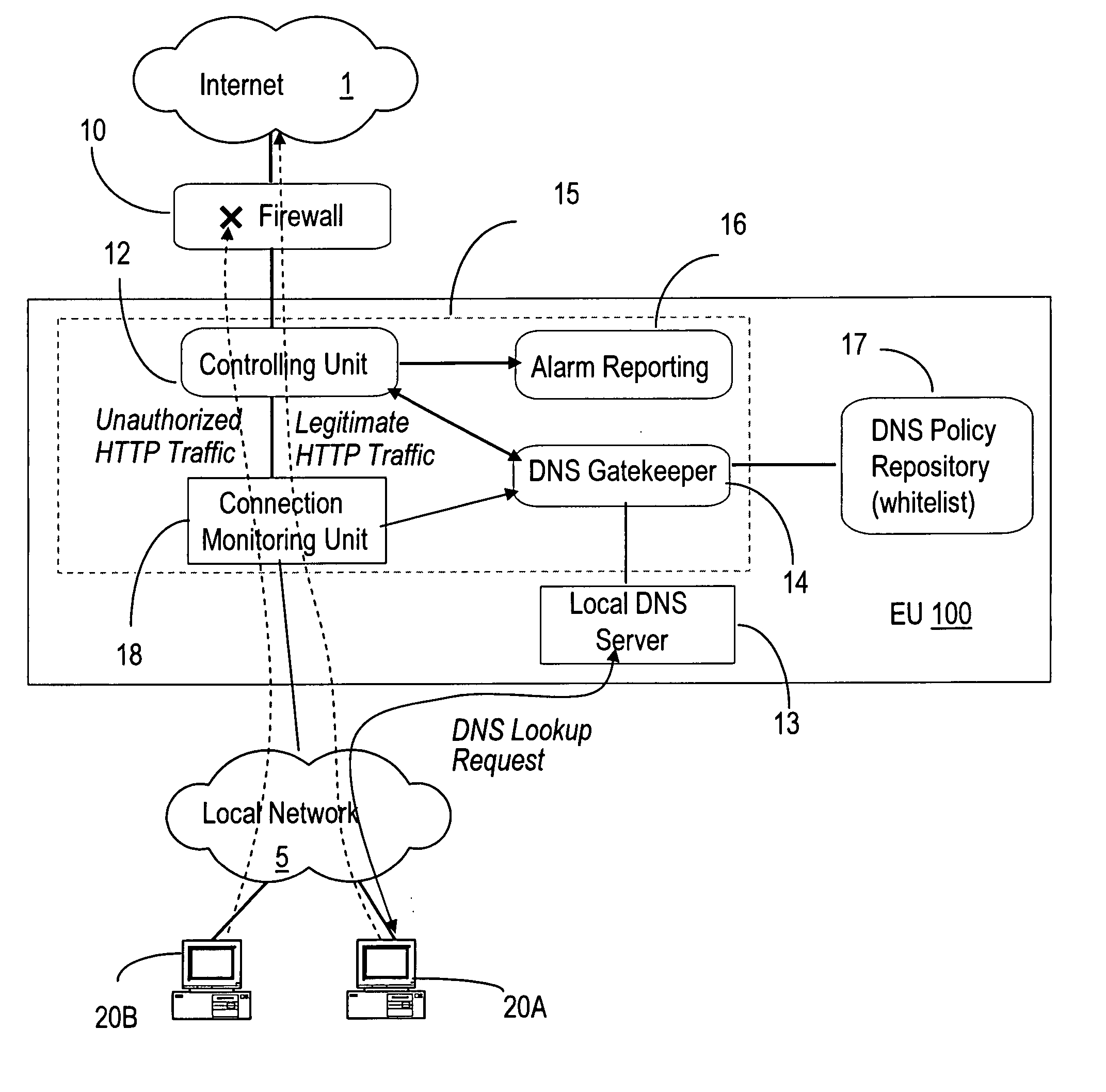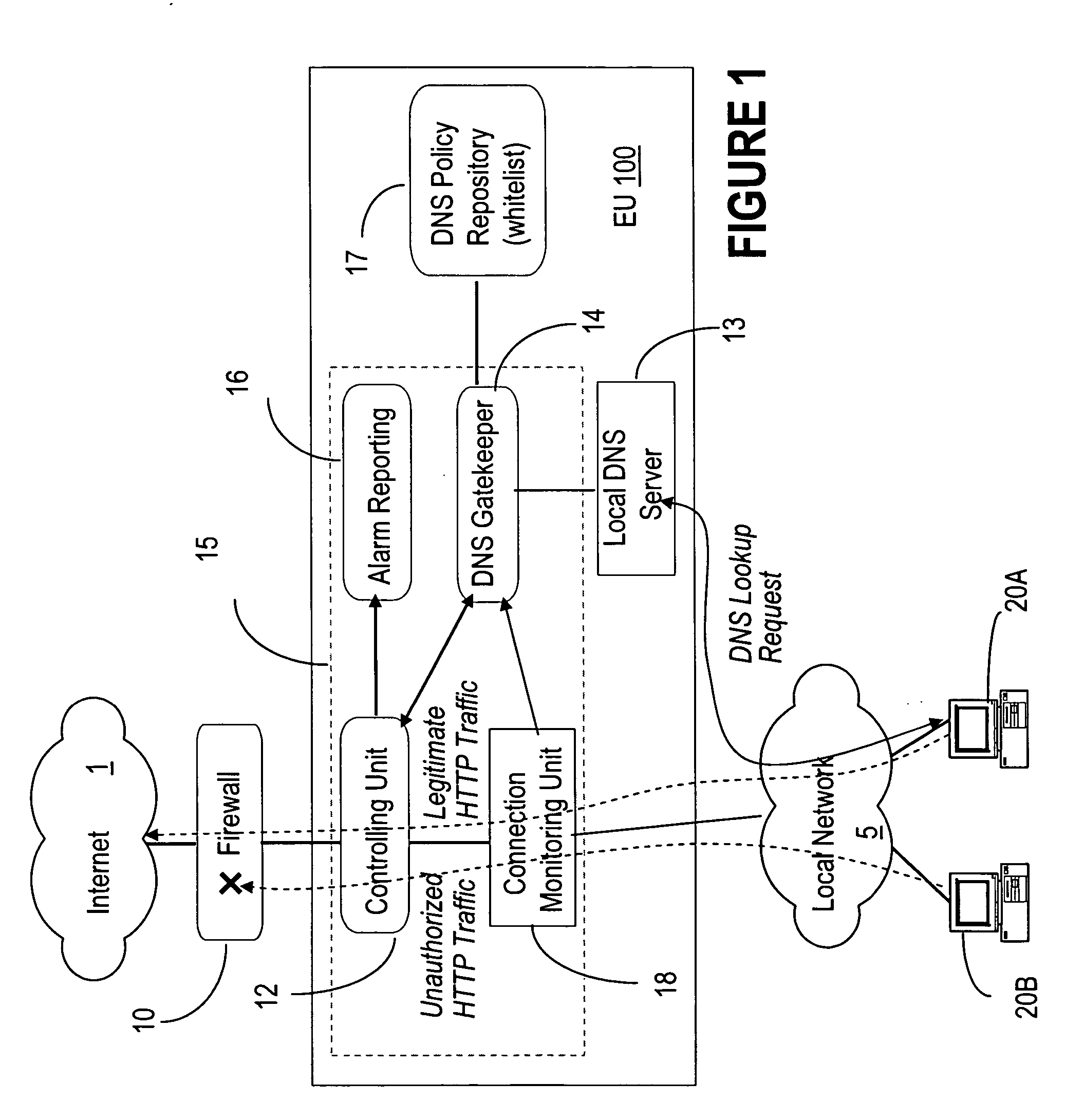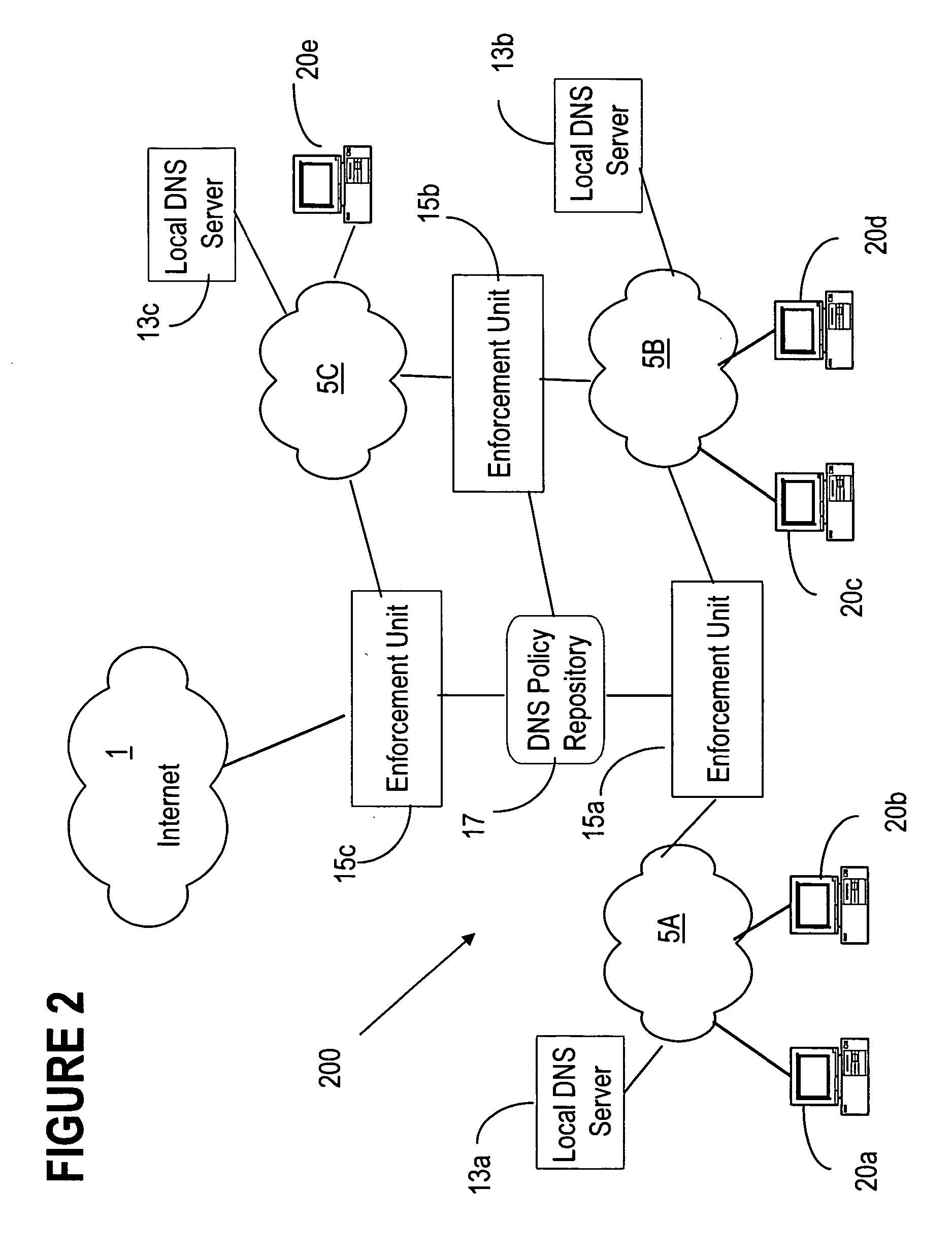DNS based enforcement for confinement and detection of network malicious activities
a malicious activity and domain name technology, applied in the field of communication networks, can solve problems such as the presence of malicious activity in the network, and achieve the effects of preventing and detecting, preventing the spread of network malicious activities, and preventing the spread of malicious activities
- Summary
- Abstract
- Description
- Claims
- Application Information
AI Technical Summary
Benefits of technology
Problems solved by technology
Method used
Image
Examples
Embodiment Construction
[0034] In the following, the term ‘network malicious activities’ refer to worms, viruses, mass mailing worms, automated attack tools—DDoS zombies, covert channels used by Remote Access Trojans, or similar threats, that pose a security hazard to a network and its operation. By ‘local network’, we mean a confined network environment which relies on one or more local DNS servers and with one or more protected accesses to another network, e.g. Internet.
[0035]FIG. 1 shows the block diagram of an embodiment of the DNS-based enforcement system 100 according to the invention. In this example, hosts 20A, 20B of a local network 5 connect to the Internet 1 via an enforcement unit 15. Hosts 20A and 20B can access both ‘inside’ and ‘outside’ resources of interest. The system 100 requires that every connection toward a resource located outside the local network is blocked by default by the local enforcement unit 15.
[0036]FIG. 1 also shows the DNS server 13 which provides the mapping between num...
PUM
 Login to View More
Login to View More Abstract
Description
Claims
Application Information
 Login to View More
Login to View More - R&D
- Intellectual Property
- Life Sciences
- Materials
- Tech Scout
- Unparalleled Data Quality
- Higher Quality Content
- 60% Fewer Hallucinations
Browse by: Latest US Patents, China's latest patents, Technical Efficacy Thesaurus, Application Domain, Technology Topic, Popular Technical Reports.
© 2025 PatSnap. All rights reserved.Legal|Privacy policy|Modern Slavery Act Transparency Statement|Sitemap|About US| Contact US: help@patsnap.com



